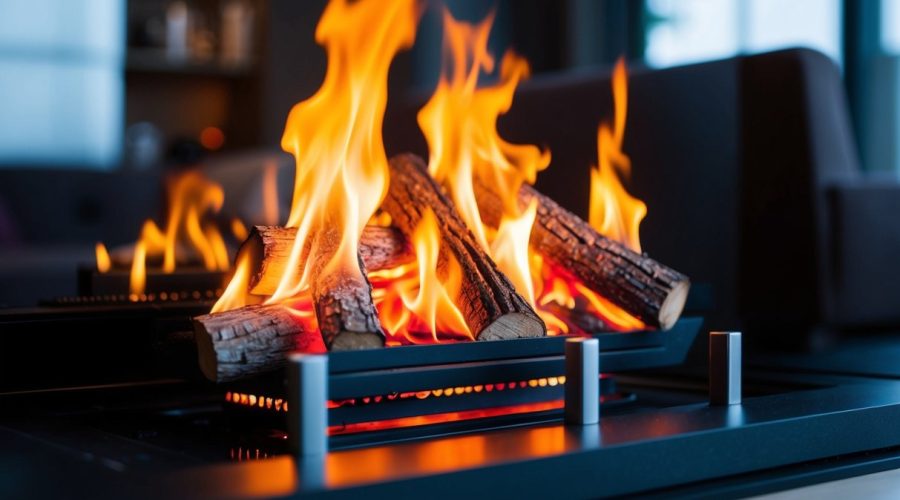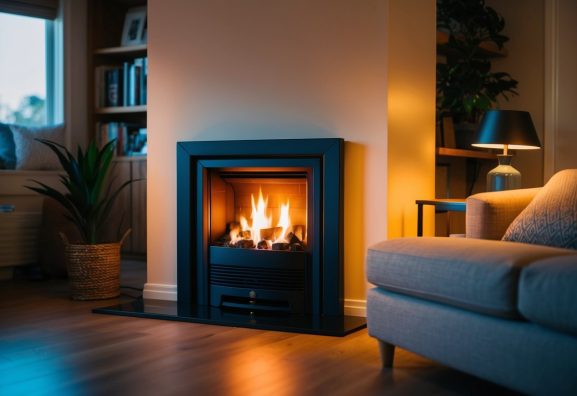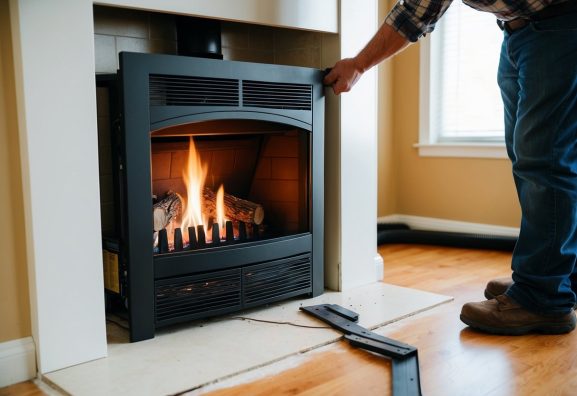Can Gas Fireplaces Burn Wood? Compatibility Explained
For homeowners seeking warmth with a hint of rustic charm, the allure of a cozy fireplace is undeniable. Yet, the question often arises—can a gas fireplace burn wood safely? Gas fireplaces are generally not designed to burn wood and attempting to do so could pose safety hazards such as chimney fires or carbon monoxide buildup. Understanding the differences between gas and wood-burning fireplaces is crucial for making informed decisions about home heating options.
The design of gas fireplaces focuses on using specific fuels like gas logs or ceramic coals to create the desired ambiance without the mess of traditional firewood. Attempting to burn wood in a standard gas fireplace may not only damage the appliance but also lead to significant safety risks. This nuanced understanding of fireplace functionality can help in making the right choice for both aesthetics and safety.
For those interested in altering their fireplaces, converting a gas unit to accommodate wood requires extensive modifications, including the installation of a flue or chimney. This blog will guide you through the essential considerations and safety guidelines to help you decide the best option for your home’s fireplace setup.
Key Takeaways
- Gas fireplaces are not suitable for burning wood.
- Conversion to wood-burning requires significant modification.
- Safety and design are key considerations for fireplaces.
Understanding Gas Fireplaces and Wood Burning

Gas fireplaces and wood-burning fireplaces provide warmth and ambiance but function differently. It’s crucial to understand their operation, fuel requirements, and safety features when considering their use.
Differences Between Gas and Wood Burning Fireplaces
Gas fireplaces are fueled by natural gas or propane and require a gas line. They are known for their efficiency, convenience, and low maintenance. Gas logs are used to simulate a real wood fire without the need for chopping or storing wood. These fireplaces typically employ a flue to vent smoke and gases, though some models are ventless.
Wood-burning fireplaces offer a traditional fire experience with crackling sounds and a natural scent. They need a chimney and flue system to vent smoke, ensuring safe operation. The firebox is designed to handle the high temperatures of burning wood. Maintenance can be more intensive due to ash cleanup and chimney inspections.
Can You Burn Wood in a Gas Fireplace?
Burning wood in a gas fireplace is generally not recommended. Most gas fireplaces aren’t designed to handle wood, and doing so can damage the unit or create safety hazards. The firebox and flue systems in gas fireplaces are tailored to handle specific types of fuel like gas logs.
Consulting the manufacturer’s guidelines is crucial. Some fireplaces allow for dual use, but these are exceptions rather than the rule. Improper use might void warranties or lead to safety issues, such as carbon monoxide buildup. Following these guidelines ensures safe and efficient operation.
Safety Considerations for Fireplaces

Fireplaces provide warmth and ambiance but come with important safety concerns that need attention. Two critical areas to consider are carbon monoxide risks and preventing chimney fires.
Carbon Monoxide and Ventilation Concerns
Carbon monoxide is a significant safety hazard when using fireplaces. Since it is a colorless and odorless gas, it can lead to poisoning without warning. Proper ventilation systems are essential to carry the gas safely out of the home.
Gas fireplaces should comply with the manufacturer guidelines to ensure safe operation. Regular inspections of the venting system should also be part of routine maintenance. Installing carbon monoxide detectors in key areas of the home further enhances safety by alerting occupants in case of gas leaks.
Preventing Chimney Fires and Creosote Buildup
Chimney fires are a potential risk in homes with fireplaces, particularly from creosote buildup, a highly combustible byproduct of wood burning. Gas fireplaces, when used improperly, can also contribute to this danger.
Routine cleaning and inspection of the chimney are vital to prevent creosote accumulation. For fireplaces designed to burn wood, ensuring that only seasoned wood is used helps reduce creosote formation. Adhering to safety tips and manufacturer guidelines for specific fireplace models limits the risk of chimney fires and enhances indoor air quality.
Regular checks by certified professionals ensure that the fireplace system remains safe and efficient. Proper care and adherence to safety protocols are essential to enjoy the benefits of a fireplace without compromising household safety.
Installation and Conversion Issues

Converting a gas fireplace to burn wood involves several crucial considerations. These include the cost and installation requirements as well as ensuring compliance with building codes and manufacturer guidelines.
Converting a Gas Fireplace to Wood Burning
Converting from a gas fireplace to a wood-burning setup requires specific modifications. The primary step is to install a wood-burning insert into the existing fireplace. These inserts can cost between $800 and $4,500. Labor costs may add approximately $2,500 to the total expense.
Proper ventilation is essential to accommodate wood burning, ensuring the chimney is up to code and the flue connected correctly. A gas starter fireplace must be examined to determine if it can transition safely to wood burning. Professional consultation is crucial for safety and compliance.
Gas Fireplace Installation Requirements
Installing a gas fireplace involves precise adherence to building codes and manufacturer guidelines. Proper placement must account for required vents and emissions. The gas fireplace insert needs to be compatible with the existing fireplace structure.
Installation must ensure the fireplace meets safety standards and regulations. Special attention must be given to the types of fuel used. For safety, any modifications necessary should always be performed by experienced professionals familiar with local codes and requirements.
Maintenance and Upkeep
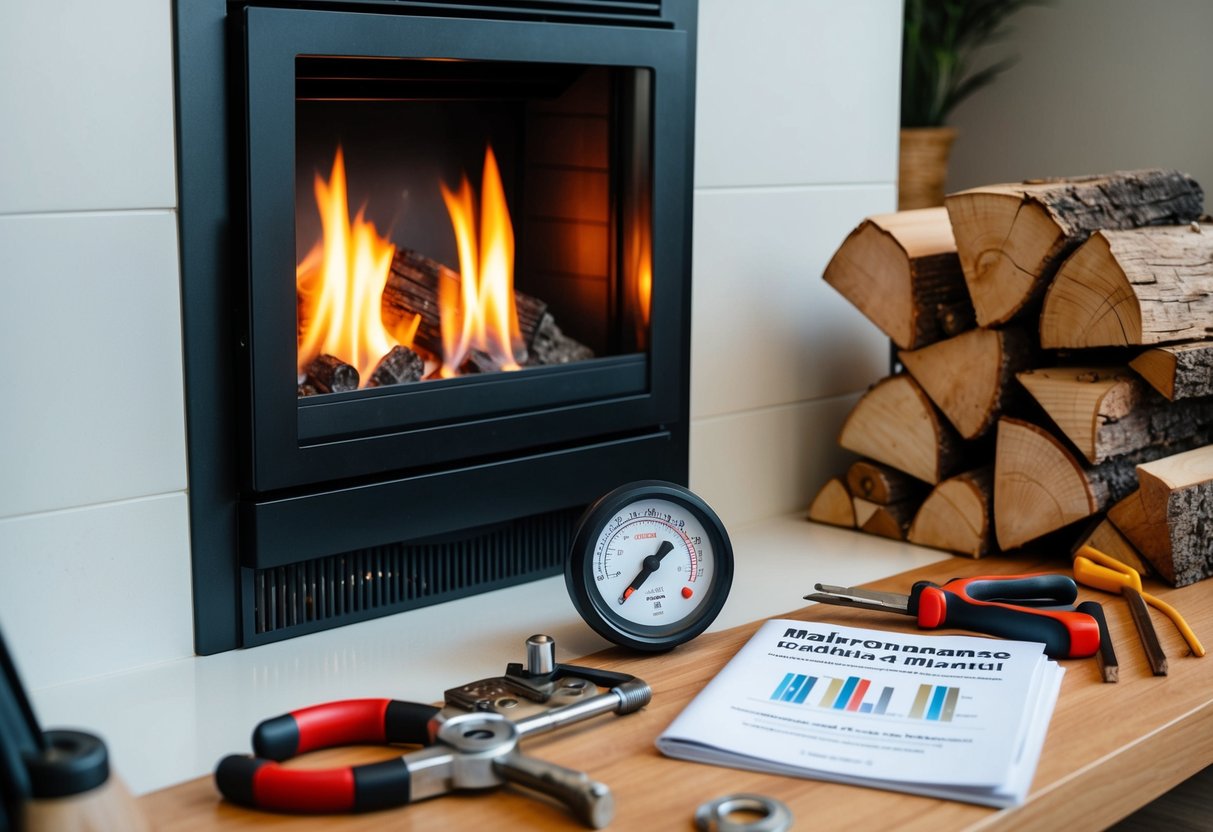
Proper maintenance of fireplaces, whether gas or wood-burning, is crucial to ensure safe and efficient operation. Gas leaks and fire hazards can pose significant risks if not addressed promptly. Below are practical steps for maintaining both types of fireplaces and identifying potential gas leaks.
Regular Maintenance for Gas and Wood Fireplaces
Gas fireplaces require less frequent maintenance than wood-burning ones. Annual inspections and cleaning by a professional can help ensure components like the burner and ignition system are functioning well. For homeowners, regularly checking the glass doors, pilot light, and ventilation system is essential.
Wood-burning fireplaces demand consistent attention. Removing ash and soot after each use reduces fire hazards. Checking the condition of the chimney flue and damper is essential to prevent smoke buildup and drafts. It is advisable to have the chimney cleaned at least once a year to remove creosote, which is a known fire risk.
Identifying and Addressing Gas Leaks
Gas leaks can occur in fireplaces that use gas starters or are entirely gas-powered. It’s vital to regularly examine connections, hoses, and seals for signs of wear or damage. A notable smell of gas or a hissing sound signals a potential leak, requiring immediate professional attention.
Installing a carbon monoxide detector near the fireplace adds an extra layer of safety. Ensuring the detector works correctly and is tested frequently can save lives. In case of suspicion of a leak, turning off the gas supply valve and ventilating the area before contacting emergency services is advisable. Always adhere to the manufacturer’s guidelines for any maintenance tasks.
Aesthetic and Functional Benefits
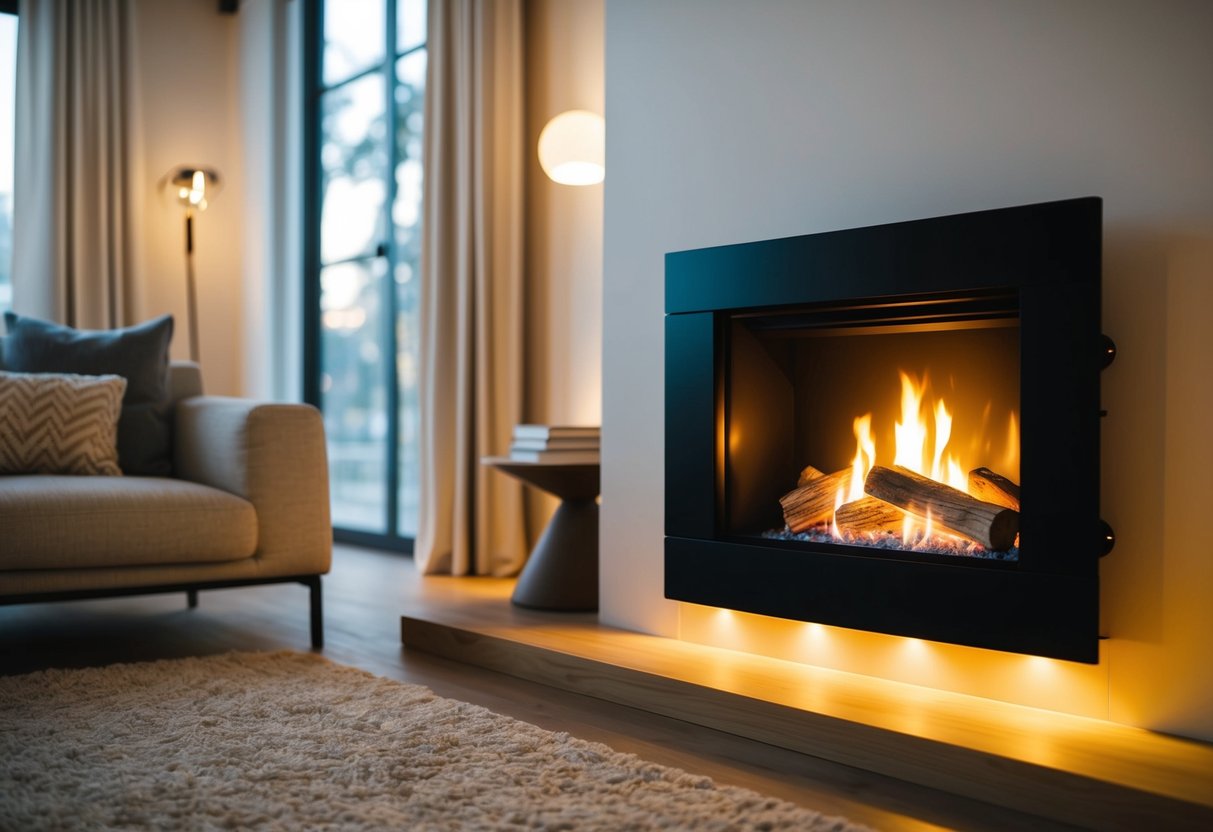
Gas fireplaces and wood-burning counterparts offer distinct advantages, impacting both the atmosphere and value of a home. While gas provides convenience and ease of operation, wood fireplaces exude a traditional charm that many homeowners cherish.
The Charm of Wood vs. Convenience of Gas
Wood-burning stoves and fireplaces are often favored for their natural beauty and warmth, contributing to the rustic charm of a space. Hardwood logs create a crackling sound and an aroma that appeals to many senses. However, using firewood requires more effort in terms of cleaning ashes and maintaining air quality, which can affect respiratory health.
Gas fireplace inserts and built-in gas fireplaces, in contrast, are known for ease of use. With ceramic logs that mimic wood’s appearance, they offer an aesthetically pleasing alternative without the mess typically associated with burning wood. Simply flipping a switch can start a fire, making them ideal for quick and hassle-free operation.
Enhancing Home Atmosphere and Resale Value
Gas and wood fireplaces enhance the atmosphere of any room. Wood options provide a cozy and authentic feel, while gas systems offer consistent warmth and instant ignition. Homebuyers often appreciate the presence of either type, potentially increasing resale value.
Incorporating a well-designed fireplace can elevate a home’s interior style. It acts as a focal point, making spaces more inviting. Though gas fireplaces might not exude the same natural charm, their low maintenance and efficiency can attract buyers prioritizing convenience and safety. These factors can significantly influence the desirability and overall market value of a property.
Frequently Asked Questions
Understanding the compatibility and conversion of gas fireplaces when considering burning wood is crucial. This section addresses safety, conversion requirements, and the use of wood in different fireplace setups.
Is it safe to use wood in a fireplace designed for gas?
Burning wood in a gas fireplace is generally unsafe. Most gas fireplaces are built for specific fuels, and using wood can damage the unit and cause safety hazards, such as chimney fires or carbon monoxide dangers.
What is required to convert a gas fireplace to wood-burning?
Converting a gas fireplace to burn wood involves professional intervention. Key steps include modifying the chimney, ensuring proper venting, and removing gas-specific components. Consulting a professional ensures compliance with local building codes and safety standards.
Can a combination gas and wood burning fireplace insert be installed?
Combination gas and wood burning inserts are available and can be installed by professionals. These inserts offer flexibility, allowing homeowners to use either gas or wood. Installation must comply with relevant safety standards and manufacturer guidelines.
How does a gas starter work in a wood burning fireplace?
A gas starter in a wood-burning fireplace uses a gas burner to ignite logs. This system helps start wood fires more easily and quickly. Gas starters require proper safety measures, including ensuring the gas is turned off once the wood is burning.
Are there safety concerns with burning wood in a gas fire pit?
Burning wood in a gas fire pit is usually not recommended. The setup of a gas fire pit may not accommodate wood safely. It can lead to larger fires or structural damage. It’s essential to follow manufacturer instructions for intended fuel use.
What are the differences between ceramic and actual wood logs for use in a gas fireplace?
Ceramic logs are designed to mimic real wood in gas fireplaces, offering the appearance of burning wood without actual combustion. They last longer and are clean-burning. Actual wood logs cannot be used in gas-only setups due to combustion and safety issues.

